
“ What is the most appropriate stage for Homo Economicus? in the middle of still ongoing turmoil, we propose a formal composition of objects that represents a three dimensional re-learning of humanistic values. We arrange a multiplicity of structures and programs in such a way that, beyond a direct response to Bocconi's immediate needs, we also address the less explicit questions raised by its current situation.

As a counterpart to Bocconi's severe architecture, our project offers a degree of complexity. Vis-à-vis the old campus - a casual ensemble of more or less independent buildings - the new complex is conceived as a core, where two clusters of interdependent buildings, one introverted and the second extroverted, around an open center, form a larger whole.

Learning Facing Living the enclosed lecture rooms and the general work spaces are arranged in a single "amphitheatre" over which the life of the school can extend in all directions - it faces a second part: an A frame of housing that "protects" the more intimate activities of the gymnasium. A roof of architectural umbrellas covers the social space between them.

A major route connects to the old campus, becomes cafeteria, student lounge and workspace, bridges the pools, forms the entrance to the gymnasium, and links the "amphitheatre" through the sports arena. the entire complex is permeable for the activities of the surrounding city… each urban extension conceived to establish the most appropriate and stimulating connection…” Rem Koolhaas.

The new complex leaves an open space at the corner between Via Castelbarco and Via Sarfatti. the urban square flows under the space of the school, confronting the surrounding academic spaces. It generates activities ranging from street market to bike parking, from square to outdoor lobby. A proper urban edge, the public space integrates part of the Bocconi stores and the cafeteria entrance. the entire complex smoothly connects to the park through the green, tri-dimensional presence of the pool - a large scale protrusion from the ground - which acts as a platform for open-air activities and extends the neighboring urban nature into the campus.
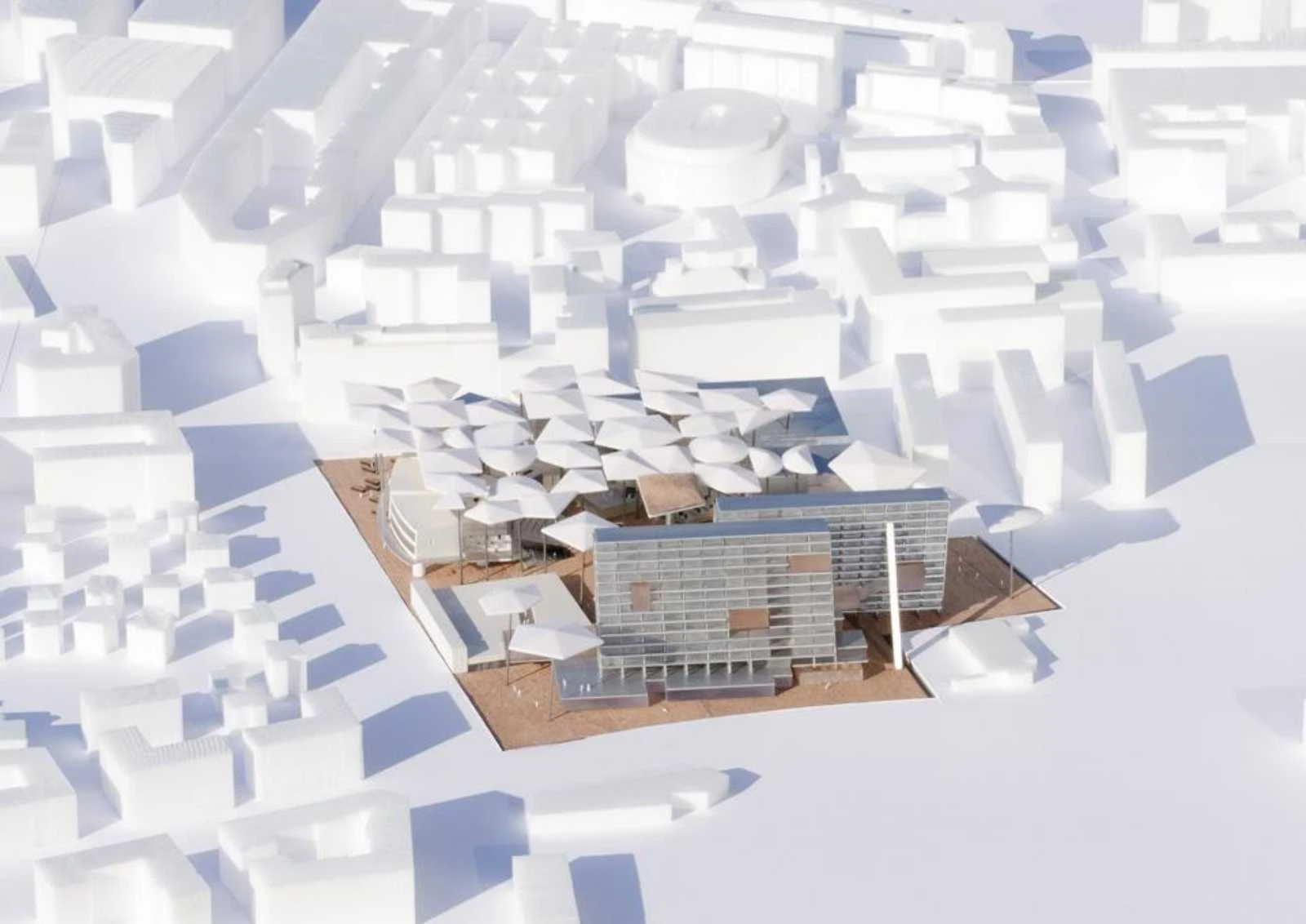
The new school is conceived as a single environment, as opposed to the rigorous organization of corridors and spaces of the current facilities. Bonded to the existing campus and taking over the site's northern area, the Management School is conceived as a single setting - a "theater." the school faces the housing - the A frame slabs - through an open social space. A canopy of architectural, metal umbrellas of different geometries extends over the building, covering and connecting the space between the two volumes. the educational spaces (auditoria-classrooms) occupy self-supported compact volumes, similar to the structure of a mushroom.
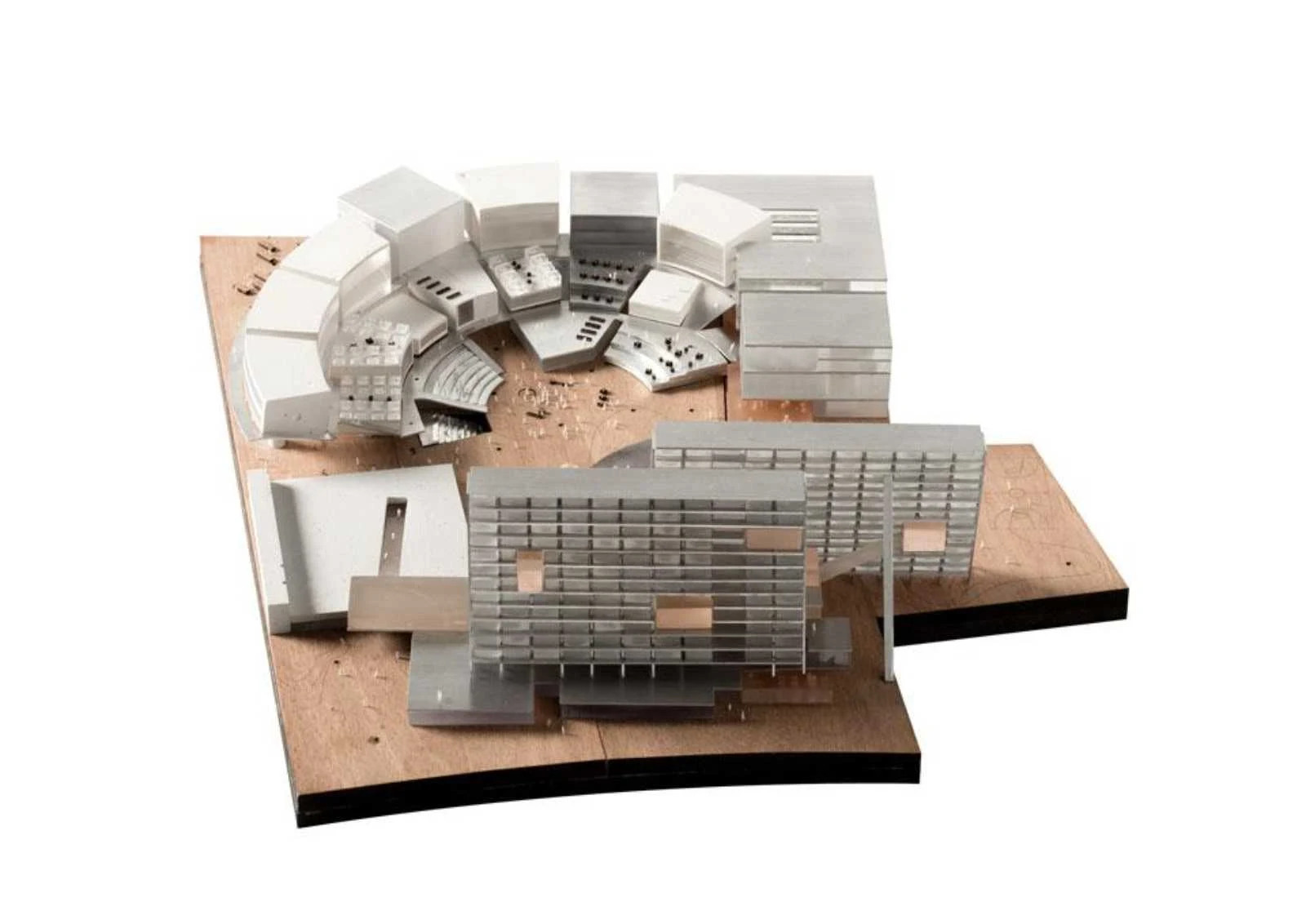
These elevated structures liberate the ground floor, allowing more permeability and open space. Collective study spaces are housed on the dispersed structures and elevated platforms scattered throughout the school. the three main levels of the school are organized with the auditoria on the top ring while the common study spaces unfold from the top to the ground through a cascade of irregular plateaus. the ground level holds the foyer/grand hall and the two main auditoriums, as the rest of the communal spaces climb to the first ring, where they begin to relate with the classrooms and study areas. the space of the "theater" remains unified, even though it is intersected at different levels by the cafeteria, offices, and recreational student areas.

The raked classrooms and study areas/boxes face the central void, while the offices, flat classrooms, and the communal spaces on the first ring turn to the surrounding streets. the "A" frame Housing acts as the backstage for the university's "theater." It is composed of two sliding slabs that define a central void. This formation exaggerates the intimacy of the outdoor areas, while reinforcing an east-west public connection. the housing's position on top of the recreation centre generate a hybrid system, where public, sport, recreational, and academic facilities are seen as a cohesive network that interacts with the dormitories throughout the 13 floors.
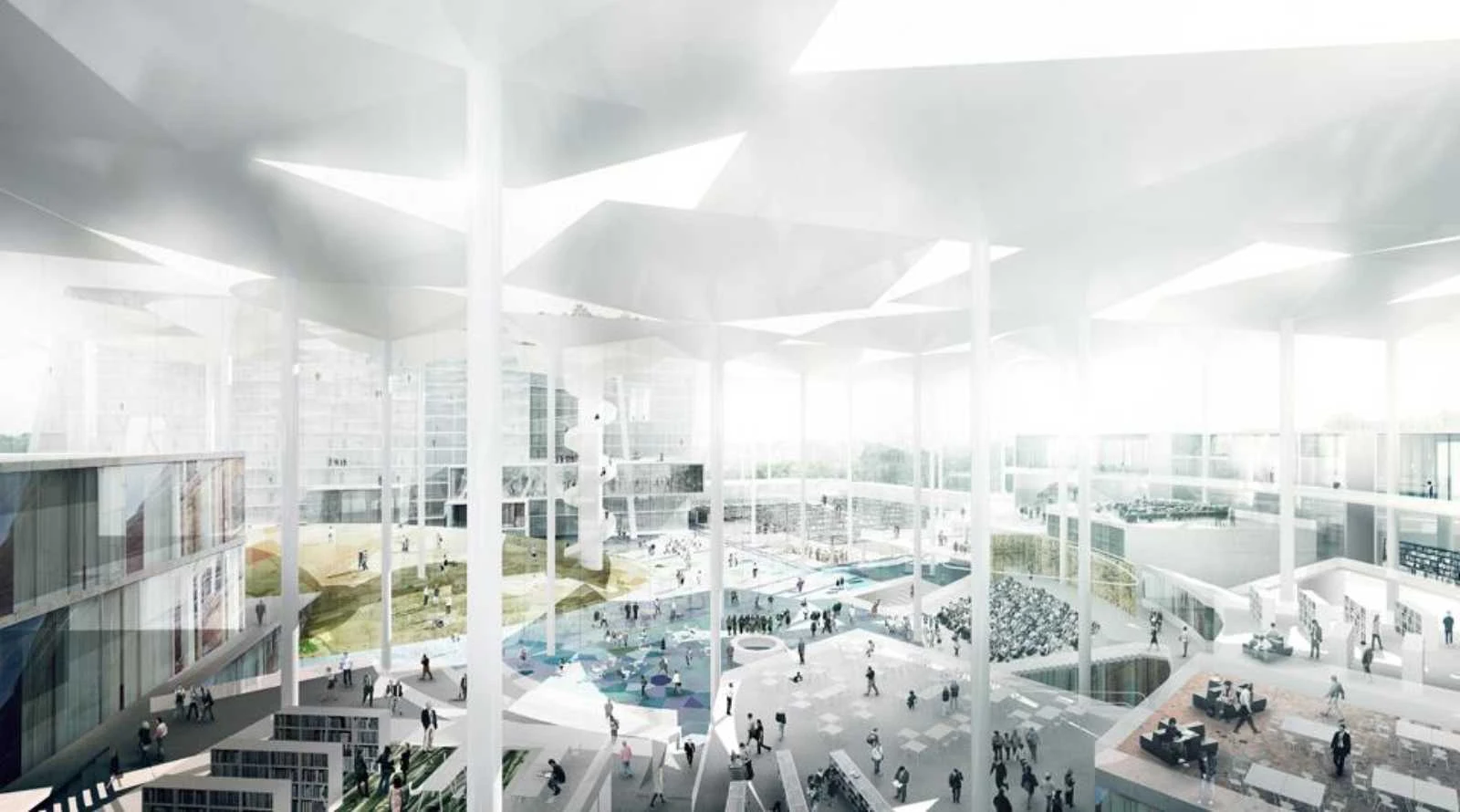
The inner-frame generates an intimate central space and spatial density that encourages social interactions between tenants - both students and teachers. in fact, although the brief asked for two entrances and the teachers' dorms are kept in the first six floors of the northern slab facing the school, there is only one common lobby that also intersects the public route and recreation center. Shared facilities are organized as a separate network growing from the sport centre through the 13th floor: a complex sequence of spaces intersecting the housing slabs at multiple levels. the sport and recreation centre resists the definition of a unified building, instead existing as a spatial network of different identities that grow around the public route.
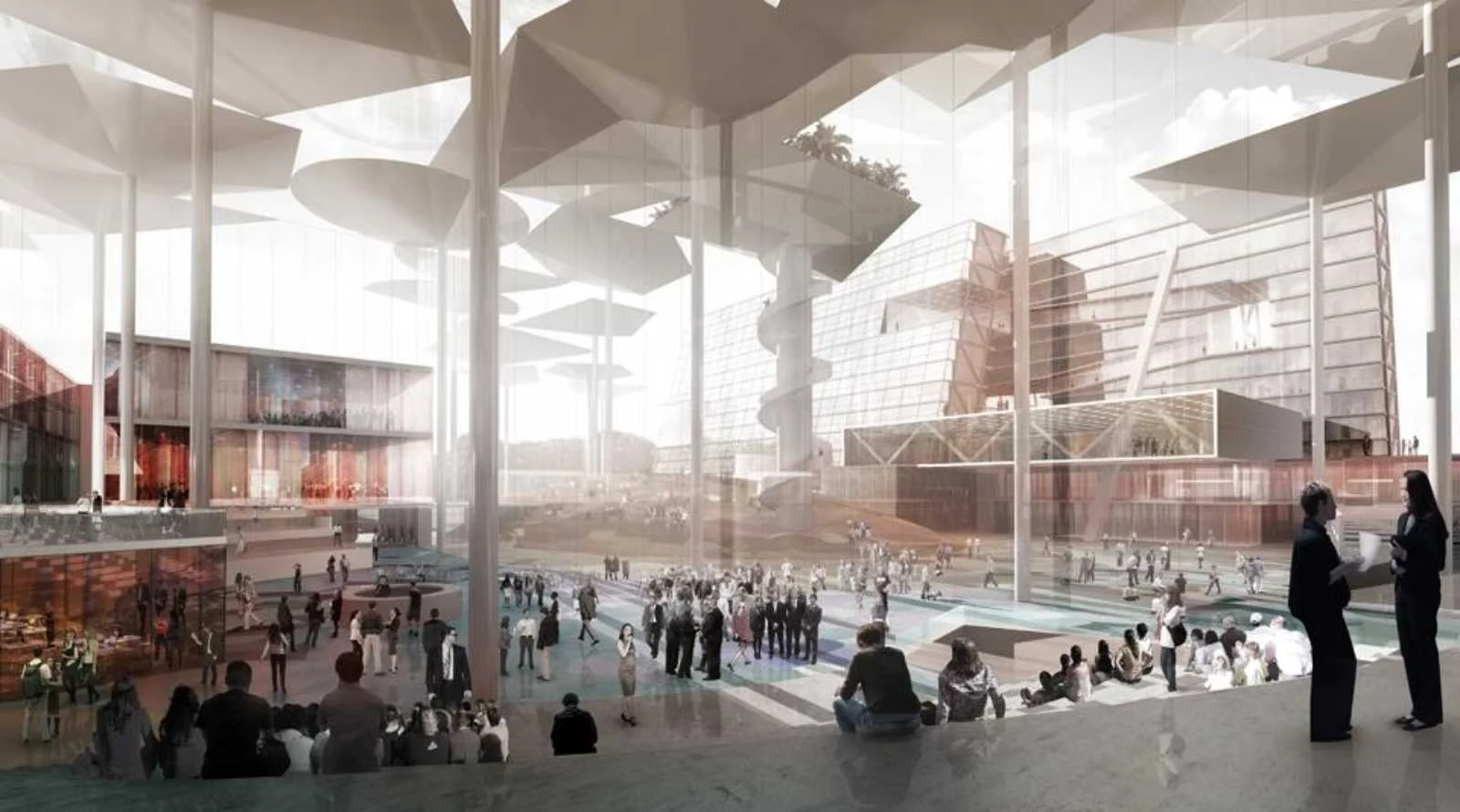
Its strewn organization promotes complexity, creating the collision of unexpected programs and visitors. the recreation center's main components, the pool and gymnasium, border the central void, have roofs that can be colonized, and are both pierced by the public route. the facilities of the "gym" expand horizontally and vertically throughout the section of the A frame housing. They connect to the network of the dormitories' shared facilities. Changing rooms and gyms are accessible and distributed by the public route, while facing the rest of the campus and overlooking the school's large interior.

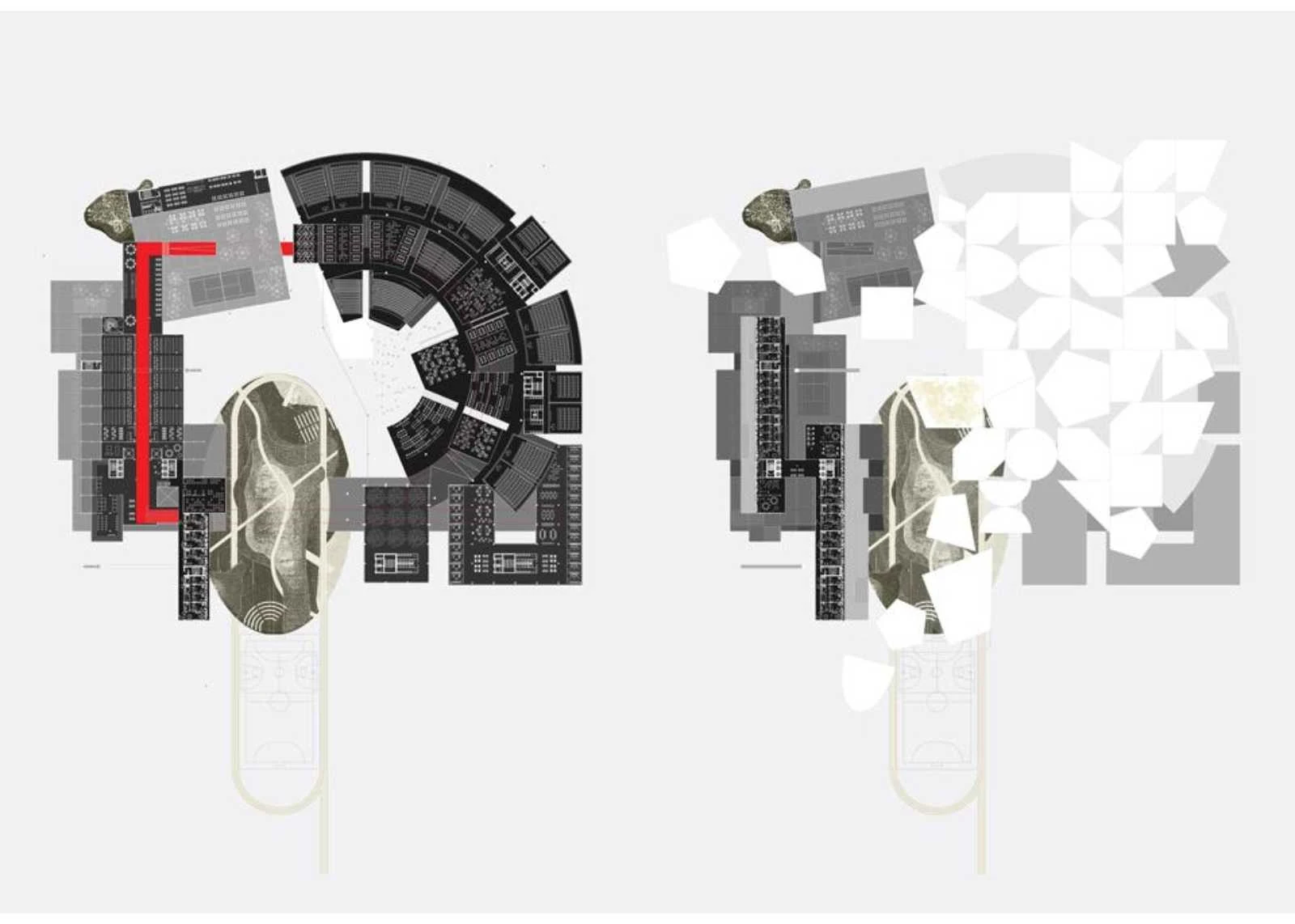
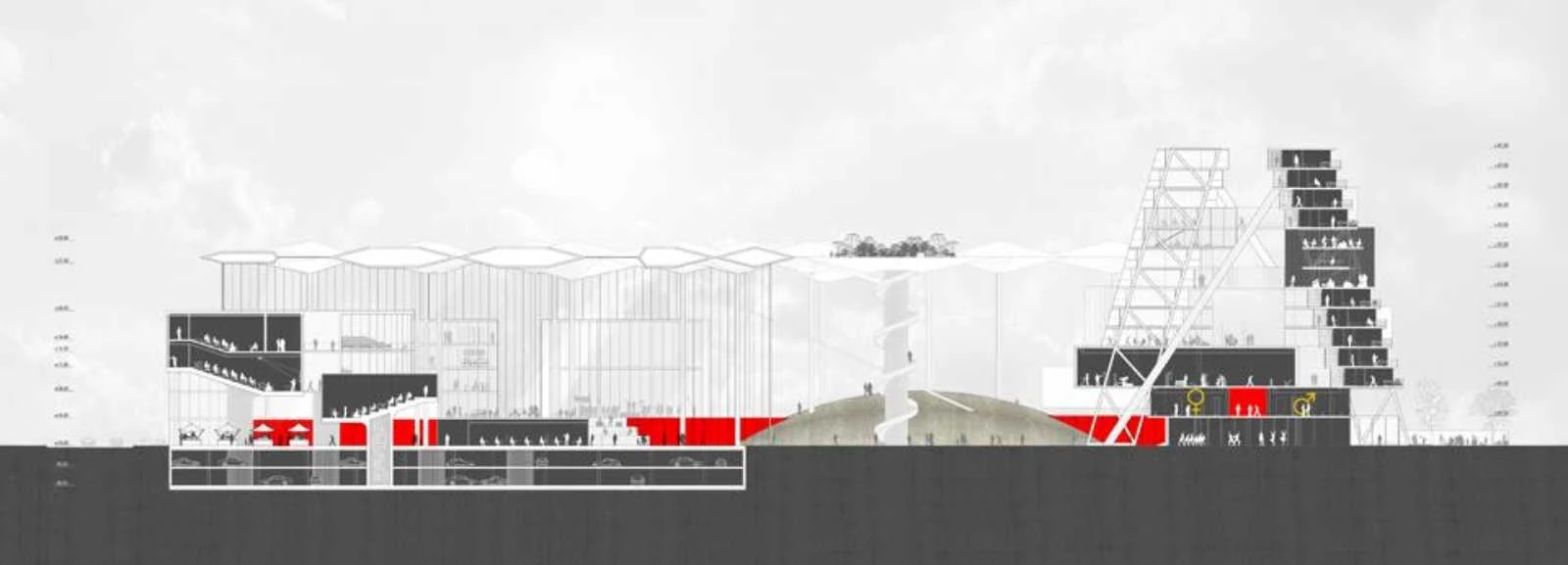
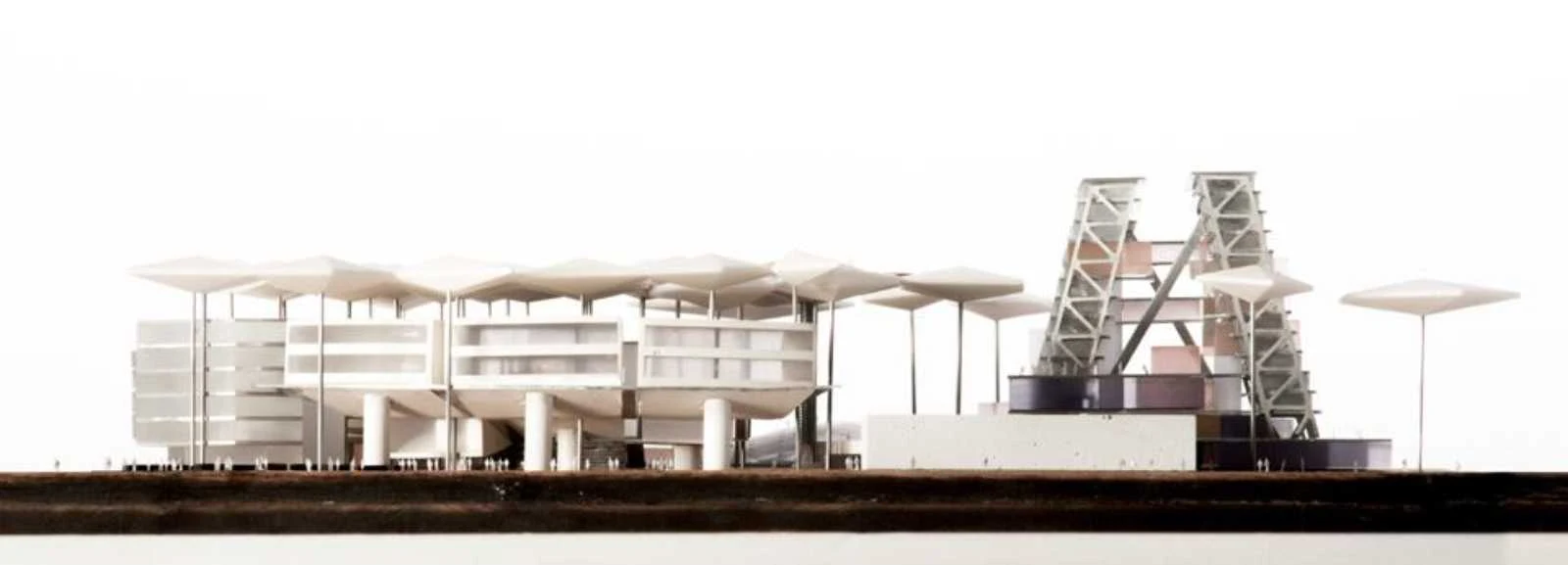
Location: Milan, Italy Architect: Oma Partner in charge: Rem Koolhaas Associate in charge: Ippolito Pestellini Laparelli Project Team: Paul Cournet, Alice Gregoire, Ricardo Guedes, Barbara Materia, Francesco Moncada, Pietro Pagliaro, Silvia Sandor, Miguel Taborda Local Architect: Studio Nonis - Fabio Nonis Structure: Buri Happold - Wolf Mangelsdorf Mep and Sustainability: Buro Happold - Paolo Cresci Urban Planning: Laboratorio Permanente - Nicola Russi Traffic: Trm Engineering - Michele Rossi Costs: Gad - Gianpiero Aresi Model Photography: Frans Parthesius Renderings: Tegmark Site: Ex Centrale del Latte Status: Competition 2012 Client: Bocconi University